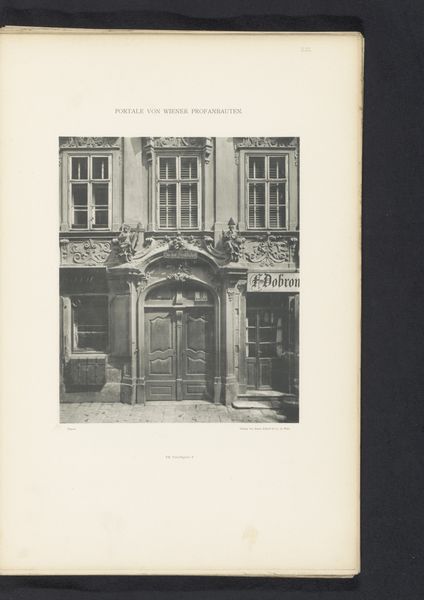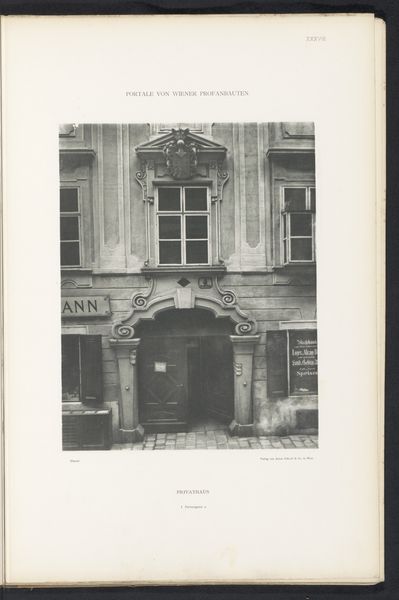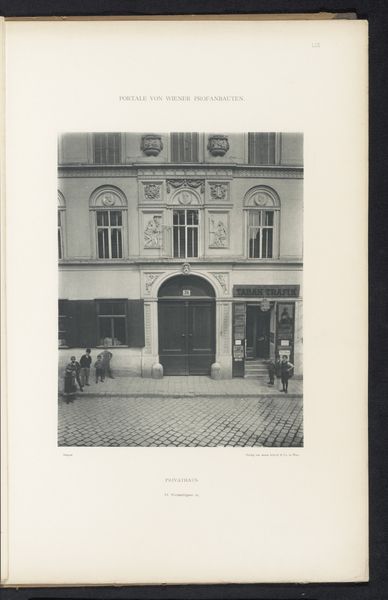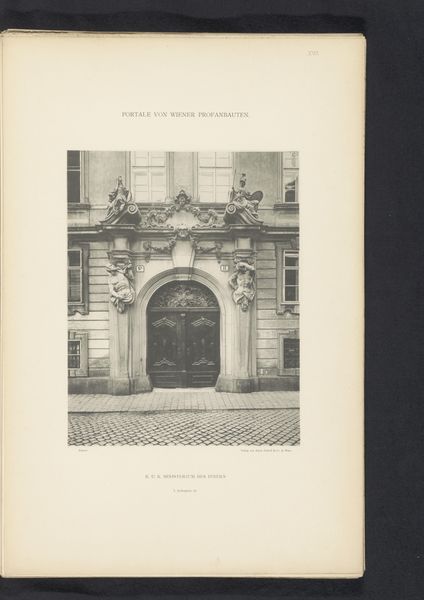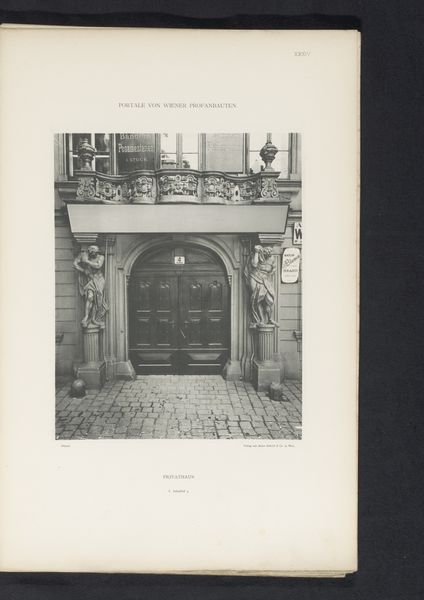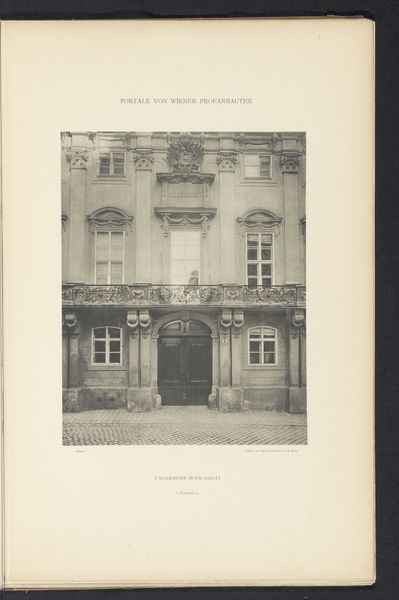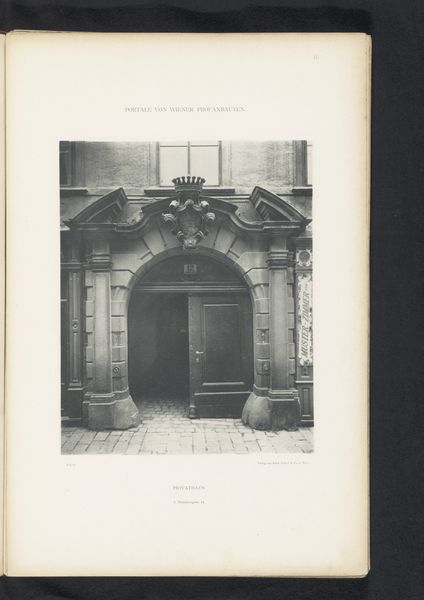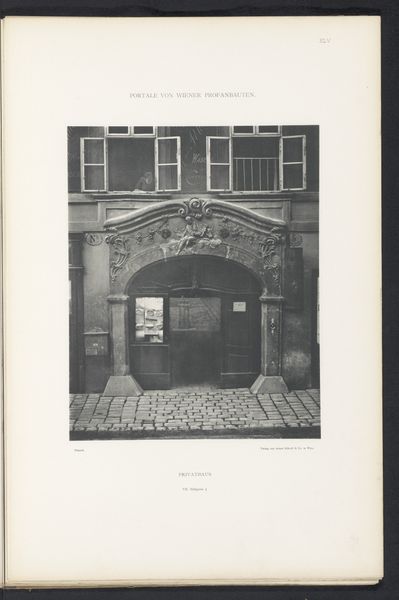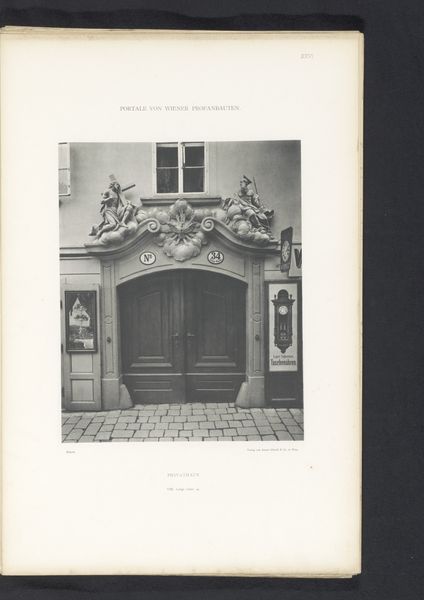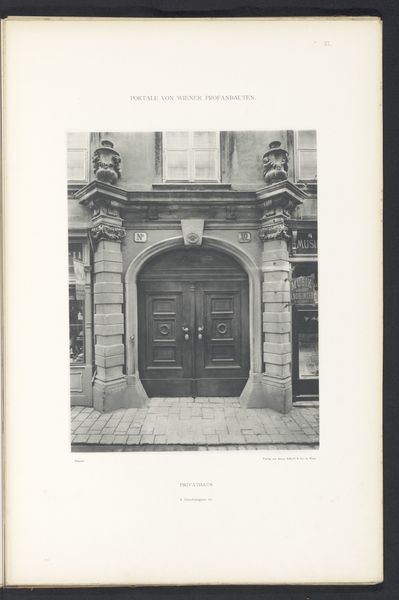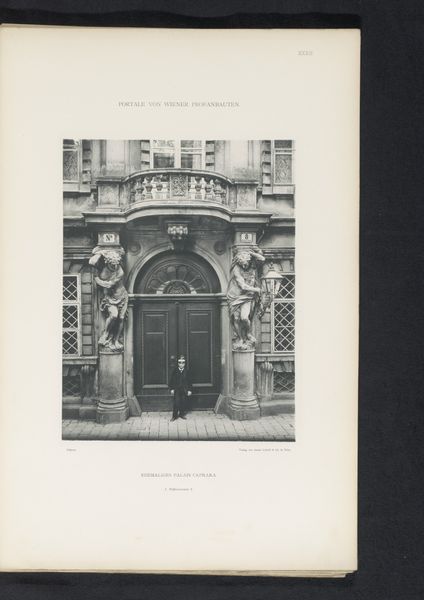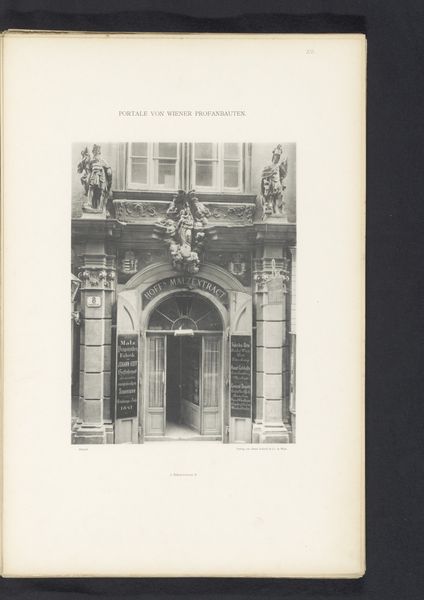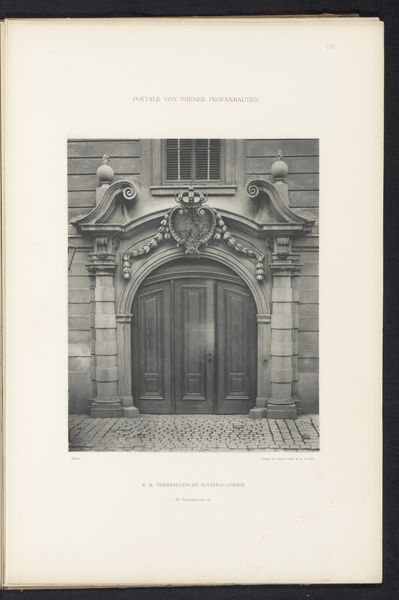
print, photography, architecture
#
byzantine-art
# print
#
photography
#
cityscape
#
architecture
#
building
Dimensions: height 267 mm, width 214 mm
Copyright: Rijks Museum: Open Domain
Curator: Here we have an intriguing print titled "Toegangsportaal van een woning aan St. Ulrichplatz 2 te Wenen," or Entrance Portal of a Residence at St. Ulrichplatz 2 in Vienna. The image, rendered using photography, predates 1894. Editor: Immediately, I'm struck by the contrast! The ornate, almost Byzantine details above the door and windows clash a bit with the mundane storefront jammed next to it. It feels… conflicted. Curator: Precisely. The photograph highlights a fascinating moment of urban transition. We see an older architectural style, perhaps hinting at the aristocracy, juxtaposed with the rise of commercialism—a bookstore, judging by the signage, staking its claim in the city. The photograph, likely part of a larger series documenting Vienna's urban landscape, plays a critical role in recording societal shifts. Editor: I'm thinking about the labor that went into creating that entryway. Someone carved those details, someone built the structure. Now juxtapose that handmade quality with the mass-produced goods inside the shop next door. And, thinking materially, we have stone and wood meeting printed paper and glass. Curator: The photographer also had to be acutely aware of his own positioning within Vienna’s socio-political context. Photography at the time was emerging as a significant medium for documentation and propaganda. What narrative was the photographer trying to construct here about Vienna's identity? Editor: It also appears that the residence isn't particularly well kept. There’s wear, tear, the kind of grittiness that you simply cannot Photoshop out, reminding us this is an image capturing real materials subject to time. Was the city administration aware of, or indifferent to, those circumstances, and what political meaning might that convey? Curator: An insightful consideration. This isn't merely a snapshot; it is a staged presentation reflecting an era of class disparity and ideological change, with the architecture symbolizing the clash between tradition and modernity. Editor: Seeing it now, it seems to prompt thinking about what’s changed and remained since it was first produced. What materials last? What labor is visible? It’s quite a prompt. Curator: It does offer valuable insight into the layered narrative that this architecture provides. I am glad we took the time to appreciate these contextual and physical elements.
Comments
No comments
Be the first to comment and join the conversation on the ultimate creative platform.
